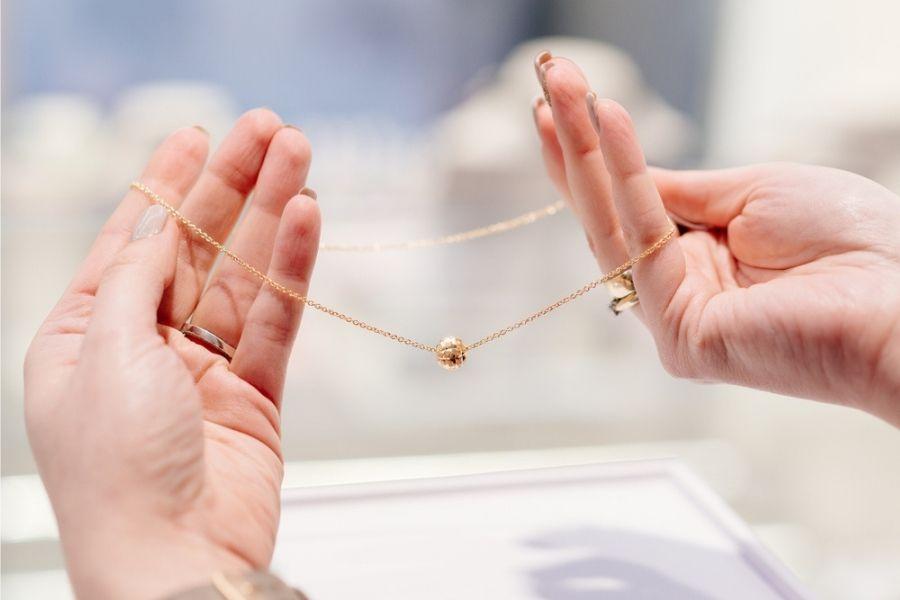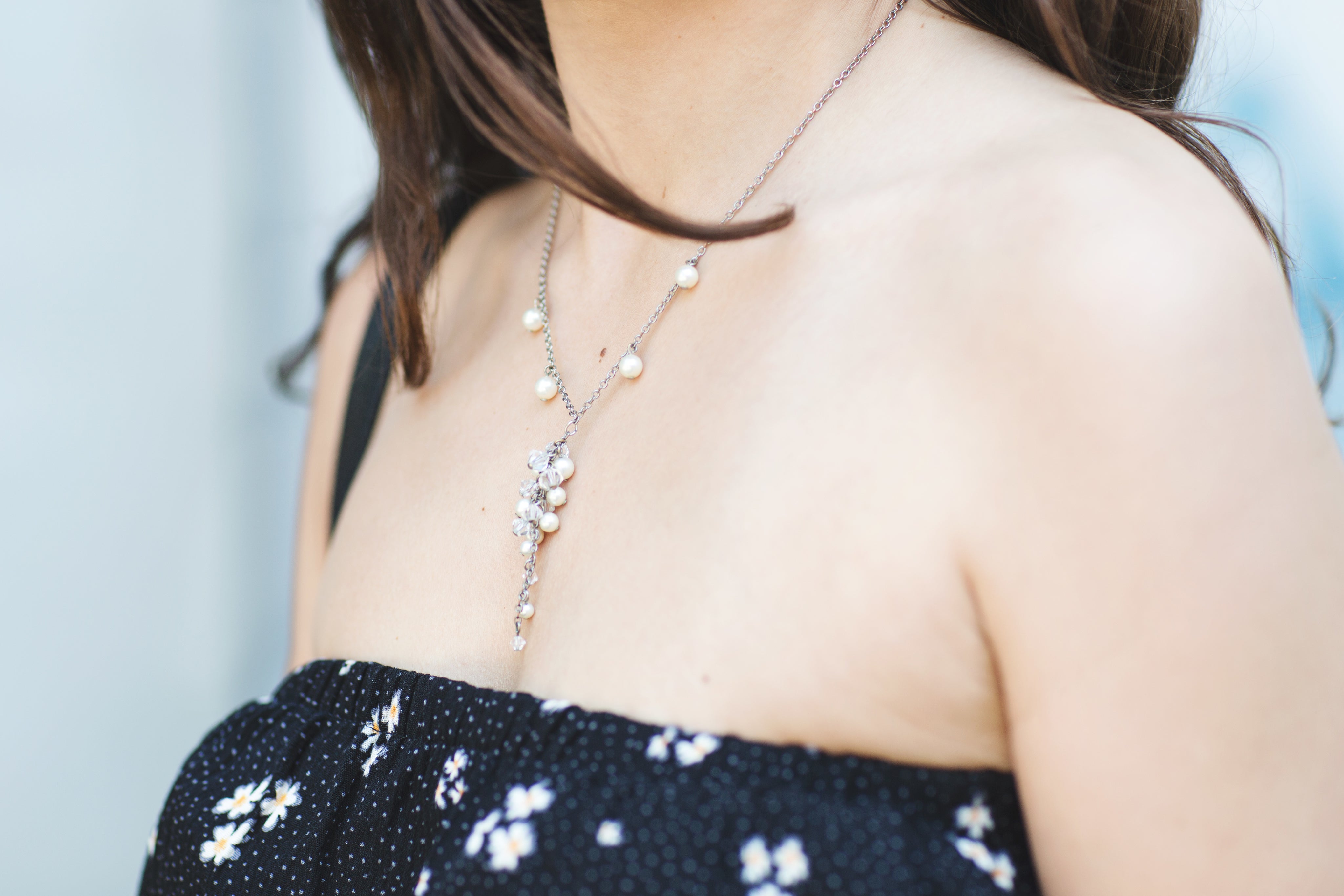
Demystifying Gold-Plating
Gold-plating is a specific type of electroplating which uses electricity to bind a thin layer of gold to the outer surface of another metal. This process makes the piece look more like a solid gold piece and is often used to produce inexpensive costume jewelry.
How Is Gold Plating Done?
The gold plating process requires the starting piece to be extremely clean and polished. The plater typically cleans the base metal pieces using either an acid or ultrasonic bath. The piece is then polished with a high-RPM rouge wheel, and deep-cleaned with steam or ultrasound.
Once they’ve prepared the surface of the piece of jewelry, the plater applies a thin layer of nickel to the base metal. This layer, called a “strike layer” or “flash layer,” protects the tanks of gold from being contaminated by the base metals. It also extends the piece’s life by preventing the underlying metal from leaking through the layer of gold.
At this point in the process, an optional base layer can be applied. Finally, the piece is lowered into a solution of positively charged gold ions. The negative charge of the jewelry attracts the positively charged bits of gold, which plates the piece in a thin layer of gold.
Is Gold-Plated Jewelry Considered Real Gold?
The gold plating on gold-plated jewelry is certainly considered real gold. Almost all gold jewelry is an alloy - a combination of gold and some other metal - so jewelry is rarely “pure gold.” However, gold-plated jewelry, as opposed to a piece made entirely of gold alloys, must be indicated as “gold plated” either on the jewelry itself or on the packaging to indicate that it’s not solid gold jewelry.
What Metals Are Typically Gold Plated?
Almost any metal can be gold plated. Copper and silver are the most commonly-used base metals for gold plating, but other commonly plated metals include:
- Stainless Steel
- Silver
- Copper
- Brass
- Nickel
- Tungsten
- Titanium
Do Gold-Plated Metals Fade or Tarnish?
Yes, gold-plated metals will fade and tarnish faster than a piece made entirely of gold alloy. Gold itself is a very soft metal, prone to wearing away unless combined with more durable metals. The gold itself doesn’t tarnish, but the layer will wear away over time, exposing the base metal underneath, which may tarnish.
Gold-Plating Thickness: How is it Measured?
Gold plating is measured in microns, which equate to one-millionth of a meter, or micro-inches, which equate to one one-millionth of an inch. A piece must have a gold layer of at least 20 micro-inches (0.50 microns) in thickness to be sold as “gold-plated” Any thinner, and the piece can only be sold as “gold washed,” “gold flashed,” or “gold electroplate.” A piece with a gold layer of less than 7 micro-inches (0.175 microns) cannot be called “gold” at all.
On the other hand, if the piece of jewelry is plated with a layer of gold that is 100 micro-inches (2.5 microns) thick or thicker, it can be sold as a “heavy gold plate” or “heavy electroplate.” These pieces might bear a hallmark that reads either “HBP” or “HEP.” If the base metal of such a piece is sterling silver it is called “gold vermeil.”
Important Things To Know About Gold Plated Jewelry

Inexpensive costume jewelry is often made using some type of gold-plating process. The gold plating makes more valuable-looking pieces available to people who may not otherwise have the budget for solid gold. Here’s everything you need to know to decide whether gold-plated jewelry is right for you.
How Much Is Gold-Plated Jewelry Worth?
Gold-plated jewelry is almost always going to be less expensive than solid gold pieces to purchase initially. However, it generally will not hold its value as well, so you aren’t likely to make much of your investment back if you try to sell it again in the future.
How To Tell If Jewelry Is Gold Plated
Generally, you can tell whether a piece is gold-plated without any special chemicals or testing equipment. First, the piece will likely be inexpensive compared to similar solid gold pieces. You may also notice a hallmark, such as “GP,” “HGP,” “GEP,” or “HGE.” The hallmark may also tell you more about the gold layer - whether it’s composed of 14k gold, 18k gold, etc.
Hallmarks are not required on all gold-plated jewelry, so you have to inspect the jewelry visually as well. Uneven coloring, flaking metal, discoloration, or unusually yellow brightness typically indicate that a piece is gold-plated rather than solid gold.
Is Gold-Plated Jewelry Hypoallergenic?
Most gold-plated jewelry includes at least a base layer of nickel, covered only by a thin layer of gold that will wear away over time, exposing the skin to the nickel. Even white gold can be plated with nickel and rhodium to make it look whiter. Therefore, only gold-plated jewelry made entirely of hypoallergenic alloys can be considered hypoallergenic. This is important to note if you have sensitivities to any metals.
How Long Does Gold Plated Jewelry Last?
Every gold-plated piece is unique, and many factors impact their lifespan. However, you can do things to maximize the life of any piece of jewelry, regardless of its composition.
While you can improve the appearance of tarnished gold-plated jewelry, the only true repair is replating. An experienced jeweler may do this for you, but make sure they know how to restore the underlying base metal. Remember - gold doesn’t tarnish, but the underlying metal might.
Gentle use and regular care will increase the longevity of your jewelry. Following the care tips below will help you get the most out of your pieces.
Tips for Taking Care of and Restoring Gold Plated Jewelry

To maximize the life of your gold-plated jewelry, care for it meticulously. The following tips will help you get the most value out of your pieces:
- Wash your hands before putting on and removing your gold-plated jewelry to minimize exposure to your skin’s oils.
- Try to avoid friction on your jewelry pieces. Rubbing surfaces, other pieces of jewelry, or fabrics that come in contact with your jewelry can cause flaking and wear down the gold layer faster.
- Keep makeup, oil, and chemicals away from your gold-plated pieces.
- Use mild liquid soap or a professional jewelry cleaning solution to clean your jewelry regularly.
- Avoid harsh chemical or abrasive cleaners, as well as brushing or rubbing the jewelry while cleaning.
- Wipe down your jewelry every time you take it off to remove body oils, sweat, and makeup.
- Remove your jewelry and store it safely before swimming to avoid exposure to chlorinated or salty water.
Advantages and Disadvantages of Gold Plated Jewelry
Gold-plated jewelry is not necessarily better or worse than any other kind of jewelry. However, there are some clear advantages and disadvantages that you’ll want to consider before you decide to make a purchase.
The Upsides:
- Gold-plated jewelry is much less expensive than solid gold jewelry.
- You can find gold-plated jewelry in more places than solid gold jewelry, from drug stores to specialty jewelers.
- The lower cost makes it possible for jewelry lovers to buy more gold-plated jewelry, allowing for exploration and experimentation with accessories.
The Downsides:
- Gold-plated jewelry has a much more limited resale value than solid gold pieces.
- The thin layer of gold covering the base metal can wear away over time, exposing the metal beneath.
- The base metal can tarnish, causing the piece to degrade in appearance.
- Gold-plated jewelry is rarely hypoallergenic.
Should You Buy Gold-Plated Jewelry?

There are significant advantages to buying gold-plated pieces, but some disadvantages as well. If you have metal sensitivities or allergies, you should avoid gold-plated pieces unless you know they’re made entirely of hypoallergenic metals. If you’re hoping for a piece of jewelry that will stand the test of time, perhaps to pass down through generations as an heirloom, you’ll probably want to stick to solid gold.
On the other hand, if you’re a jewelry lover who wants to wear something different with every outfit, gold-plated jewelry may be the perfect cost-effective solution. It is important to choose jewelry that suits both your budget and sense of style. As long as you care for your pieces, they should last long enough to bring you plenty of joy.




Leave a comment